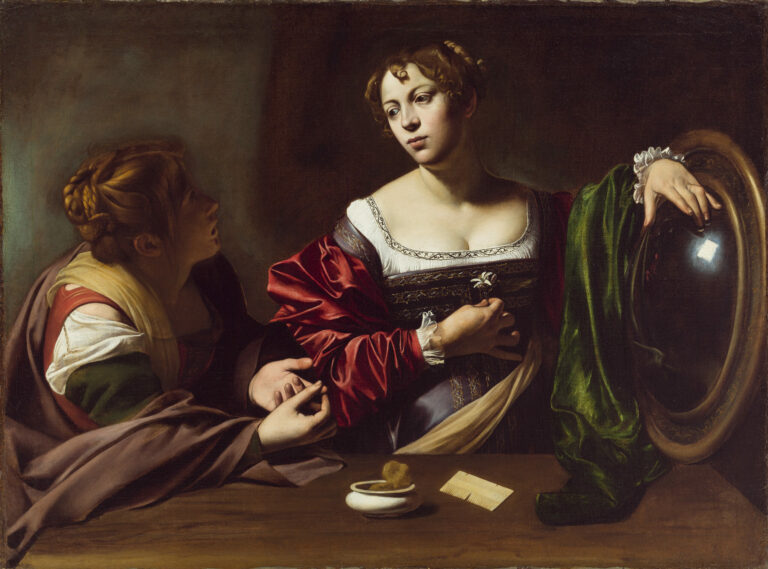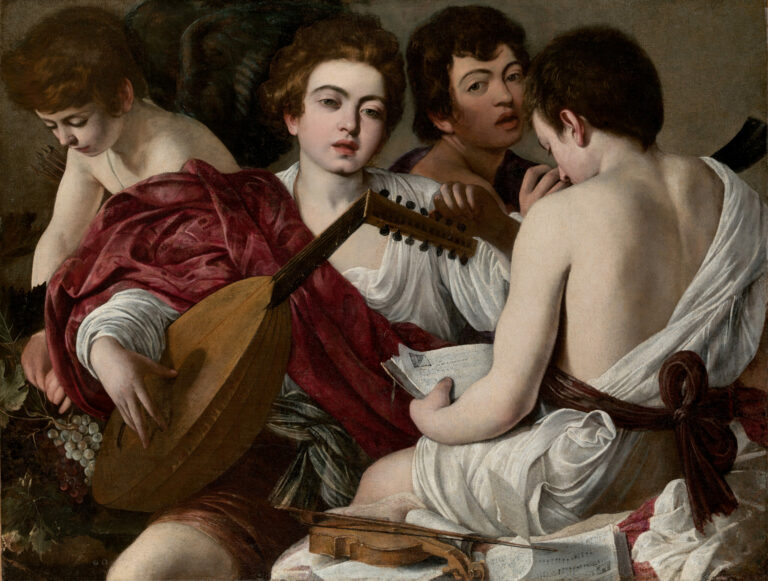Caravaggio
Michelangelo Merisi da Caravaggio (1571-1610) revolutionized European painting through his dramatic style and striking realism. Born in Lombardy, he moved to Rome around 1592 where he developed his groundbreaking chiaroscuro technique, creating spectacular light contrasts that gave theatrical intensity to his religious and secular works. A painter with a violent temperament, he fled Rome in 1606 after killing a man in a brawl, subsequently wandering between Naples, Malta, and Sicily while continuing to create masterpieces such as “The Beheading of Saint John the Baptist.” His naturalistic approach—painting directly from life without idealization and choosing common people as models for sacred figures—scandalized and fascinated his contemporaries in equal measure. Dying prematurely at 38 on a Tuscan beach under mysterious circumstances, Caravaggio left behind a relatively small but enormously influential body of work that gave birth to Caravaggism, a movement that spread throughout 17th-century Europe.


